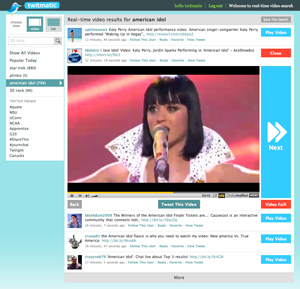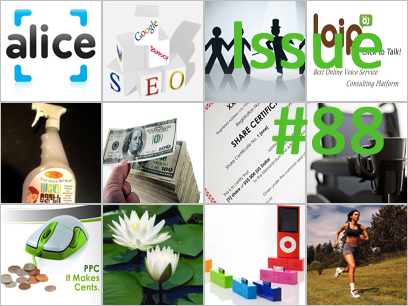
I just returned from San Diego where I walked my third marathon. It took me 6.5 hours. (I’m not a runner, I’m a walker, and that’s averaging between a 14- and 15-minute mile.) Now if you know anything about marathons, you’ll know that I’m never going to make the Boston marathon with that time.
In fact, I was beaten by an 86-year-old woman from South Carolina (we were neck and neck for awhile — she pulled away when I stopped for a bathroom break, beat me by 5 minutes) by a man dressed in a banana suit, by naked man (he whipped off his shorts when he crossed the finish line, although it’s probably not fair to compare him to me as he definitely had less wind resistance than I had) and a bunch of guys dressed as Elvis.
My point is if I was doing marathons to win, I would probably be in the depths of despair this week. Lucky for me, I do marathons for other reasons that have nothing to do with speed and everything to do with perseverance.
In fact, I think every business owner and entrepreneur should complete a marathon at least once in their life. No, not because I want partners to share in the torture and agony, but for the same reasons why I do. Let me explain.
I’ve come to the conclusion that nature has intended for the human body to only travel about 20 miles at any one time. I’ve decided this based on both science and my own experiences.
Now, I’m not a scientist but here’s my understanding of what’s going on when you walk a marathon. Your body only has around 2000 calories of ready energy it can use at any one time. How long does it take you to run out of 2000 calories? Oh, about 20 miles. After 20 miles, your body starts attacking your muscle to use as fuel (your body can’t burn fat on its own, it can only access the fat through burning something easier, such as carbohydrates or muscle).
At the same time, the hormones your body produces when you run (the ones that are responsible for the “runner’s high”) are used up.
When that happens, the natural pain killer that’s part of the runner’s high also disappears, so now you feel every bit of the pain your muscles are going through.
In other words, somewhere between mile 20 and 24, your body runs out of ready energy and starts attacking your muscles and also runs out of the hormones that give you extra energy, stamina and pain relief. There’s a term for this you might have heard. It’s called “hitting the wall.” And if you’re going to hit the wall, you’re going to hit it somewhere between mile 20 and 24.
As someone who has smashed head first into said wall, I can tell you it’s not pretty. You can get a second wind at mile 12, 16, even 18.
There’s no second wind at mile 24.
During every marathon I’ve done, there comes a time where nothing helps. Nothing. Everything hurts. Everything. You’re exhausted.
Every muscle in your body is screaming for you to stop. You’re keeping your legs moving on sheer grit and determination alone. There’s nothing else left.
The only thing that even comes close to helping during this time is the people cheering on the sideline. The ones near the end yelling “You can do it, you’re almost there.” (Note to spectators, this is the time to lie. Tell the runners or walkers or limpers they’re almost there or the next mile marker is around the corner, even if the next mile marker is actually around the corner, up a hill and a half-mile away. You need anything you can grab on to at this time.)
So for all you spectators, yes your cheering really DOES help. Don’t let our grumpy expressions fool you. We’re hanging on to what you’re saying for dear life.
(On another note, the neighbors who live between mile 15 and 16 who every year buy a gazillion oranges, spend hours cutting them up and then MORE hours standing on the street handing them to us as we go by, I only have one thing to say to you — I’m leaving you in my will.)
Okay, so my hypothesis is the human body is only supposed to walk or run for 20 to 24 miles. And a marathon is 26.2 miles (and yes, that .2 is VERY important — that .2 of a mile is harder than the first 20). So what that means is you are literally pushing yourself past your body’s limits for at least 2.2 miles.
In fact, that’s why I think marathons ARE 26.2 miles. Because they push past your physical boundaries.
I suspect this was the discussion back when marathons first came up. The Marathon God was sitting around with the other Greek Gods in Mt Olympus and the conversation went something like this. “Maybe a marathon should be 20.4 miles.” “No, no, that’s still within their body’s limits.” “Okay, so how about 28.8?” “No, that’s too far. Too many people will drop out or die and that defeats the purpose.” “So what about 26.2 miles?” “Perfect, just far enough to push past their boundaries and not so far that they give up or die.”
So walking marathons is about pushing past boundaries. If you can push past your body’s physical limits with your mind, then you should have no problems pushing past other boundaries with your mind, such as income boundaries or business growth boundaries.
After all, you know it’s possible to build a multi-million-dollar (or billion-dollar) business from scratch. You’ve seen other people do it. And after you walk a marathon, you’ll know you can push past boundaries because you’ve just done it. So therefore, now you know you have the capability to push past whatever boundaries you’ve set for yourself. You’ll have physical, tangible proof of it. (And they even give you a medal when you finish.)
And that, my friends, is why I think every business owner and entrepreneur should walk or run a marathon at least once in their life.








